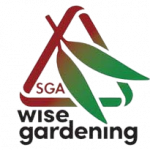
Choices to Protect You and the Planet
WiseGardening shows risks of garden chemical products to humans, birds, bees, frogs and other species when you use them to control pests, diseases and weeds and helps you choose wisely.
As estimates of the number of synthetic chemicals in the world continues to grow by 2000 each year from around 144,000, it is worth knowing more about garden products which contain them. Many may cause harm to:
- Users – if they spill or ingest them or breathe in the aerosols
- Species that visit or live in our gardens – birds, bees, fish, worms, frogs and a range of mammals such as pets especially if the chemicals persist in the soil
- Aquatic species – if the chemicals can be washed through soil and windup in streams and other waterways they may harm not only fish, but also other aquatic organisms.
In this Australia-first initiative, WiseGardening assesses and rates risks of garden chemical product ingredients and other features of commercially available products (currently over 850 which together contain 413 ingredients). WiseGardening also presents alternative non-chemical options to help you make informed choices about dealing with garden problems.
If you would like to see what choices there are, WiseGardening is for you!
WiseGardening Ratings
View the WiseGardening ratings to compare commercially available garden chemical products.
Better Choices Guide
How addressing problems with garden pests, weeds and diseases in the garden which don’t require the use of chemical products.
Our Aims
Read about why WiseGardening is important for the sustainabity of the planet.
How we Rate Products
The WiseGardening Assessment and Rating Process is dedicated to continuous improvement of methodology to accurately assess risks of chemical garden products and to openly and honestly inform users of them.
Support WiseGardening
WiseGardening is being provided by a not-for-profit organisation, largely staffed by volunteers.
A tax-deductible donation would be greatly appreciated!
Try WiseGardening on your Mobile Device to Compare Ratings on the Go!
View on your Mobile and click on the “Add to Home Screen” button.
Problems with download and install?
Some assistance can be found HERE
Click the Button Below to Add WiseGardening to Your Home Screen
Problems with download and install? Some assistance is HERE
© 2022 Sustainable Gardening Australia. All rights reserved
